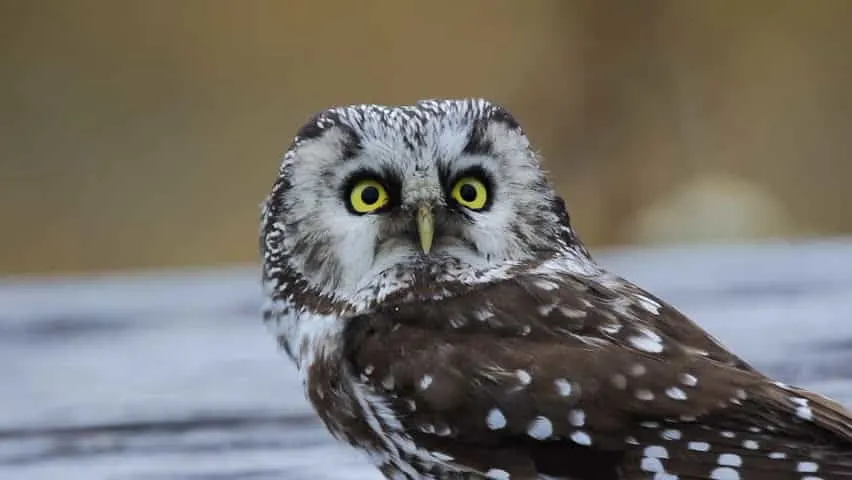Do you want to know all about Animals in Greece?
When you think about traveling to Greece, what pops into your head first? The rich culture, history, beaches, island living, food, and wine?
I bet you didn’t think: the place with the highest biodiversity in Europe. That’s right; Greece has so much more to offer on top of its stunning history and breathtaking coastal areas! Over 900 species of wildlife and over 5,000 species of flora are within its borders.
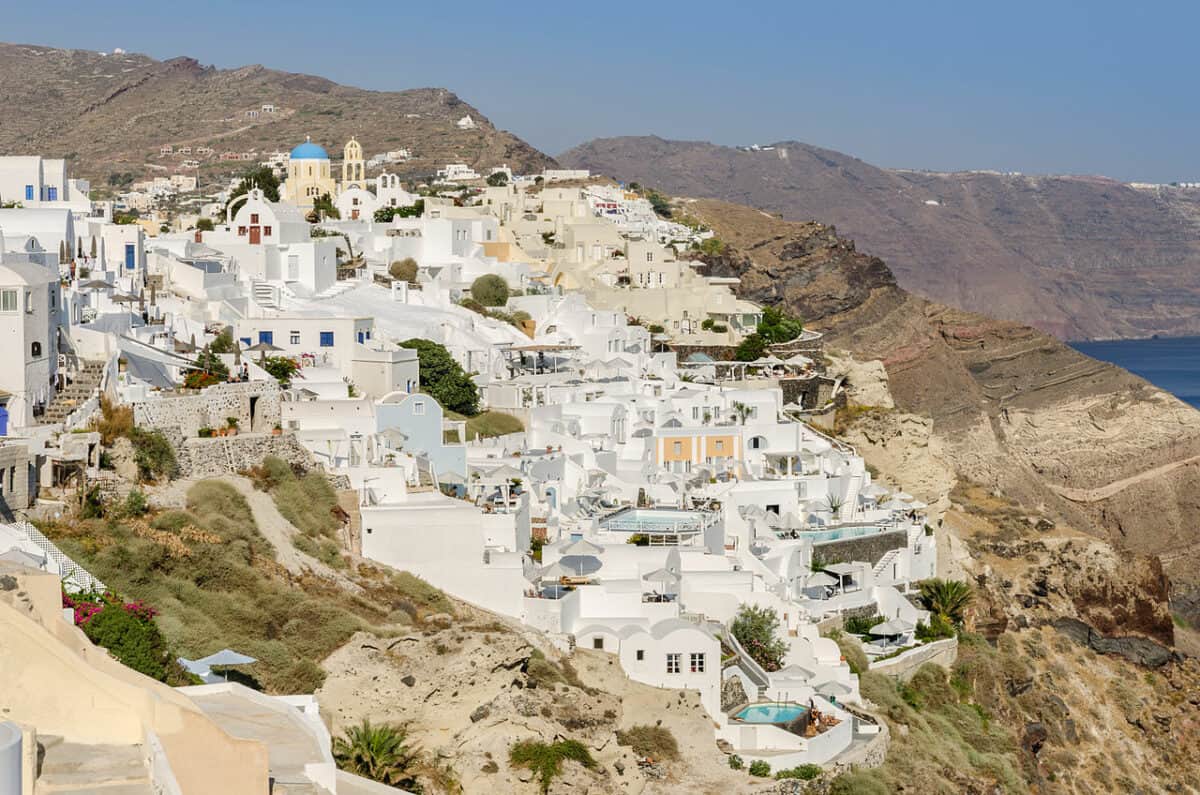
Beautiful image of Greece. Image via Norbert Nagel, CC BY-SA 3.0 https://creativecommons.org/licenses/by-sa/3.0, via Wikimedia Commons
So how about you plan your subsequent wildlife encounter to be in Greece? Here we have the list of all the land and ocean wildlife in Greece you should see while there and the best local tourism operators.
“Greece is the country of diversity… Zeus must have hit this area with his hammer, splashing thousand islands in the sea and tearing the mainland into pieces so that the country’s coastline became as long as the one of the whole continent of Africa. This physical multiplicity is increased by a wide gradient of climates, ranging from almost subtropical to truly alpine conditions, as well as by a variety of mountains, hills, and plains, many of which scattered with wetlands. No wonder these conditions have produced an exceptionally rich living nature, in fact the highest biodiversity known in Europe.”
Dr Luc Hoffmann (1923-2016) Co-founder of WWF
Follow along with the blog or click the headings to skip to the part that interests you about Animals in Greece.
More about Greece
Greece occupies the southernmost extension of the Balkan Peninsula of southern Europe.
It has an extensive coastline (exceeding 15,000 km in length) along the Mediterranean and the Aegean Sea and is mainly mountainous. The Greek mainland accounts for 80% of the land area, with the remaining 20% divided among nearly 3000 islands.
Climate
Much of the country experiences a Mediterranean climate (hot, dry summers and winter rainfall), especially the islands. Higher regions of the western and central parts of the country, and the mountainous parts of the Peloponnese, experience an Alpine climate.
Snow falls on high mountain tops in winter, particularly on the northern side of the country (Epirus and Macedonia). It rarely snows on the Greek islands, except for the island of Crete, which sees snowfalls on the top of the White Mountains and Mount Psiloritis.
The climate varies across the country – snow may still lie near the peaks in June, while the lowlands are experiencing high temperatures.
Biodiversity
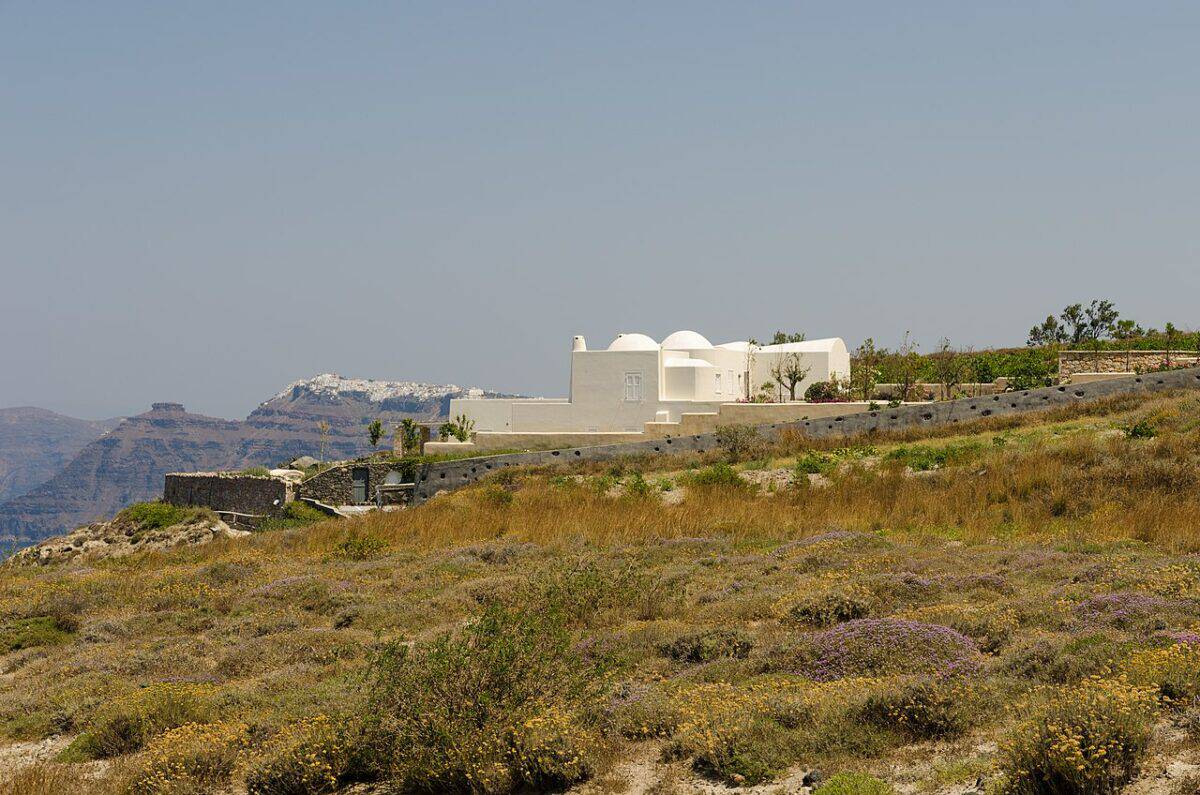
As mentioned before, Greece is one of the wealthiest countries in the European Union regarding biodiversity. Its diverse geological features – ranging from high mountains to the deepest waters of the Mediterranean – combined with a variable climate generate a great range of habitat niches to suit a spectacularly diverse collection of wildlife in Greece.
Regarding fauna, there are 115 mammal species (12 of those are marine mammals), 446 bird species, 22 amphibians, and 64 reptile species. Some 162 freshwater and 476 marine fish species are also hosted in Greece’s waters. With 30,000-50,000 invertebrates also present, exhibiting a very high degree of endemism.
In terms of the wildlife in Greece – Greece hosts some of Europe’s largest and scariest animals on land and in the sea.
What do animals represent in ancient Greece?
In the literature of ancient Greece, animals are used to represent all things that do not belong to civil society or the Greek community: slaves, women, and foreign peoples (barbaroi). Symbolically, animals are often placed outside the country.
Flora
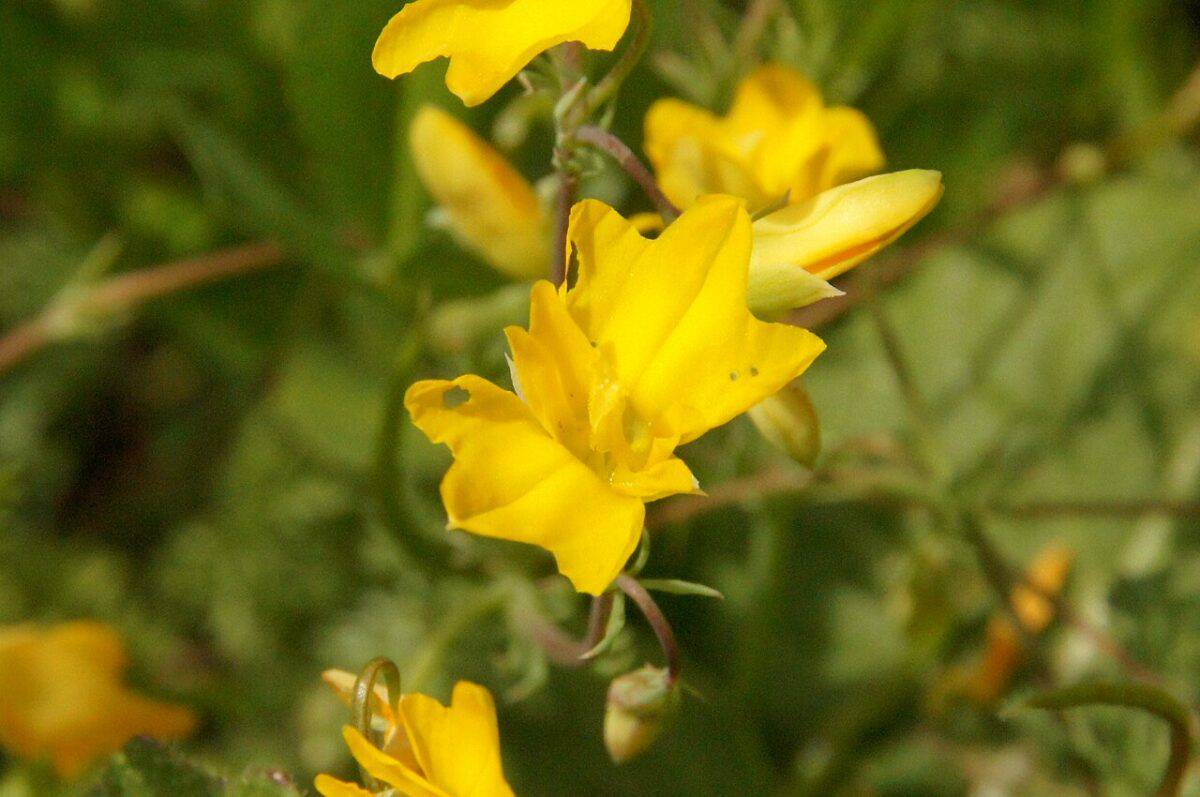
Greece yellow flowers. Image via rob Stoeltje from loenen, netherlands, CC BY 2.0 https://creativecommons.org/licenses/by/2.0, via Wikimedia Commons
Over Greece’s extensive history, many new plants have been introduced and become a recognized part of Greece’s landscape. Many of these plants have become deeply rooted in Greek mythology.
Greece hosts Europe’s highest number of endemics (approximately 1450 endemic taxa). This mountainous country is the fourth largest country in Europe concerning forest resources, with 25% of Greece covered in natural forested areas. Intensive land use has reduced these forests to remnants, and only 2,5% of Greek territory is established as protected areas.
This seems a relatively low percentage, and I am sure many different definitions of a protected area exist. NATURA2000 areas of Greece are 19% of the country, for example.
Many of the flowers that grow in Greece’s countryside are connected to Greek folklore and history. The hyacinth flower, which clings to Greece’s rockier areas, was created by the blood of Hyacinthus, a lover of Apollo, a Greek god. Daffodils – which thrive in rocky, arid areas – are seen as symbols of Hades, the god of the underworld and death.
Birds
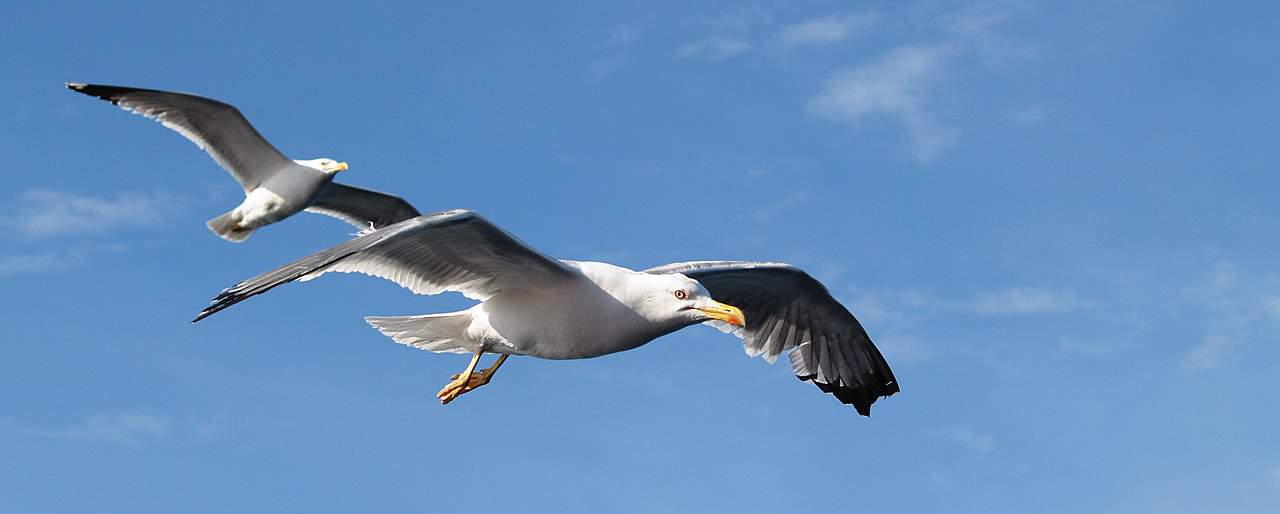
The wildlife in Greece is not just limited to animals on land and in the ocean. With its varied topography and habitats, Greece has rich bird fauna. Besides the resident bird populations, many migratory species visit the country as they move seasonally between their breeding grounds and overwintering areas.
About 450 species of bird have been recorded in Greece. The Dadia Forest in the northeast is an important area for birds of prey, where four vulture species have been recorded. The Pilgrim Falcon and the Upupa Epops birds inhabit the mountainous and forested areas.
As additional info: The Pilgrim Falcon and the Upupa Epops in English are called Peregrine Falcon and Hoopoe. The Minerva Owl is called Little Owl in English.
Birds are also featured in Greek mythology. The Minerva owl is considered a symbol of Athena, who had the city of Athens dedicated to her, and it is also depicted on the 1 Euro coin.
Land Animals in Greece
Due to its location in the Mediterranean Basin, Greece has many fauna and flora in the sea and on land. Here is a small selection of the animals that live in Greece.
Brown Bear
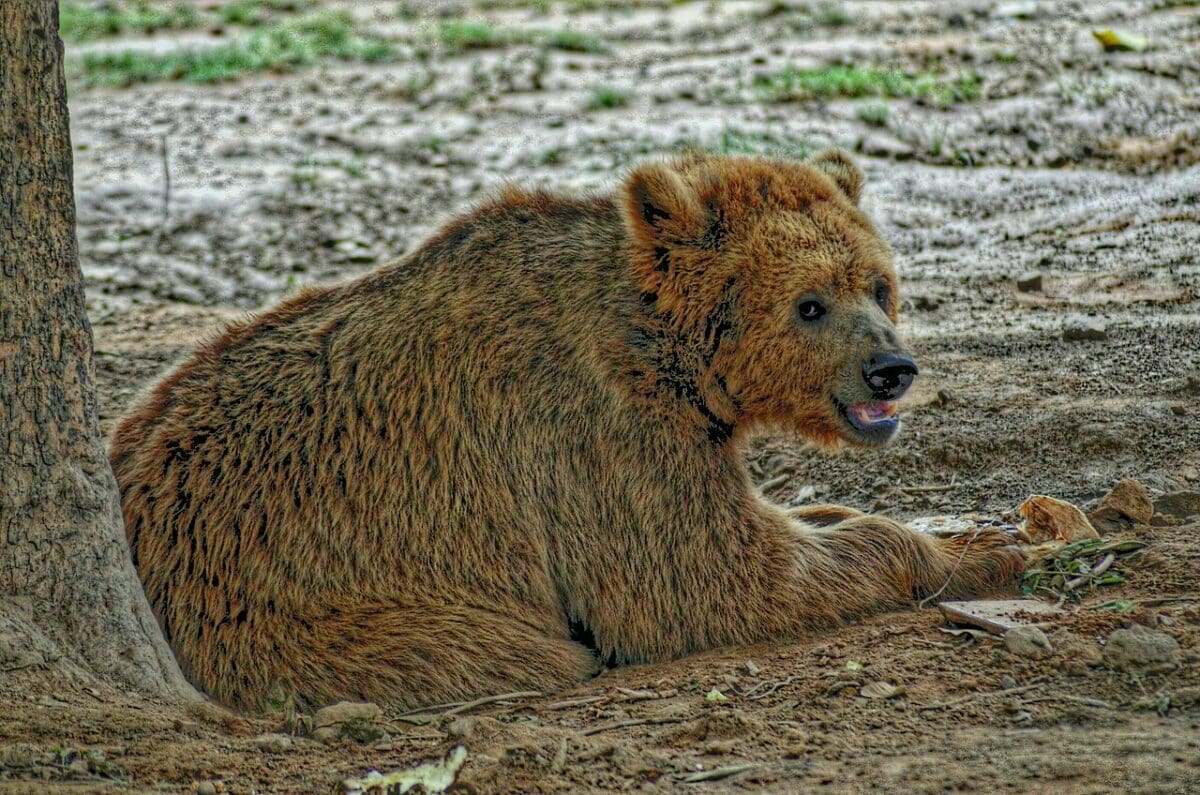
Greece has a rich history with bears. Image via Shahzaib Damn Cruze, CC BY-SA 4.0 https://creativecommons.org/licenses/by-sa/4.0, via Wikimedia Common
When you think of Greece, your mind probably drifts to dreamy Mediterranean coastlines, sun-soaked beaches, and island getaways. However, there’s another side to this picturesque country that often goes overlooked by tourists: a side characterized by rugged mountains, sprawling forests adorned with black pine, beech, and oak, and a notable population of brown bears.
Believe it or not, Greece is home to approximately 700 brown bears, and they’re not hiding on some remote, inaccessible terrain. These magnificent creatures have made their homes in two key regions: the Rodopis Mountains and the Pindos Mountain Range. The Pindos Mountains, in particular, host the majority of Greece’s brown bear population, creating a unique and unexpected facet of this beautiful country’s natural landscape.
Endangered animals in Greece: Brown bear conservation
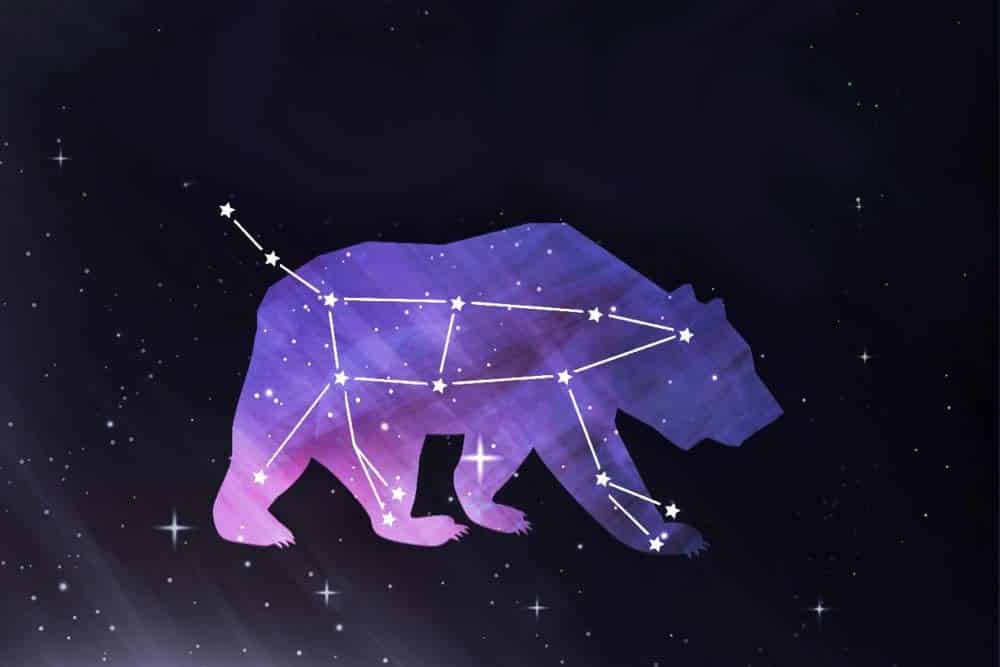
Like many places in Europe, Greece historically had a thriving bear population before numbers dwindled due to poaching and loss of habitat. But an NGO, Callisto, is working to preserve and grow the remaining bear population.
For the past five years, Callisto has offered intrepid travelers the chance to track brown bears in the Pindos Mountains and use tourism as a conservation tool.
Each hike explores truly remote trails in the Pindos Mountains and, led by a bear expert, includes a donation to Callisto.
“We are mostly promoting contact with the whole area – this sensation of the mountains, of the living creatures inside the mountains, and giving guests a perception of the relationship between the local people and nature. You get a lot of local, cultural contact.”
Quick facts:
- These bears are the largest carnivorous mammal in mainland Europe.
- Greece has a rich history with bears – Ancient Greeks even saw them in the stars. The mythology goes that Callisto, the daughter of King Lycaeon of Arcadia, was cursed to live as a bear by the God of Hunting, Artemis. She was later placed in the skies by Zeus and remains visible to humans now; as the bear constellation Ursa Major.
Eurasian lynx
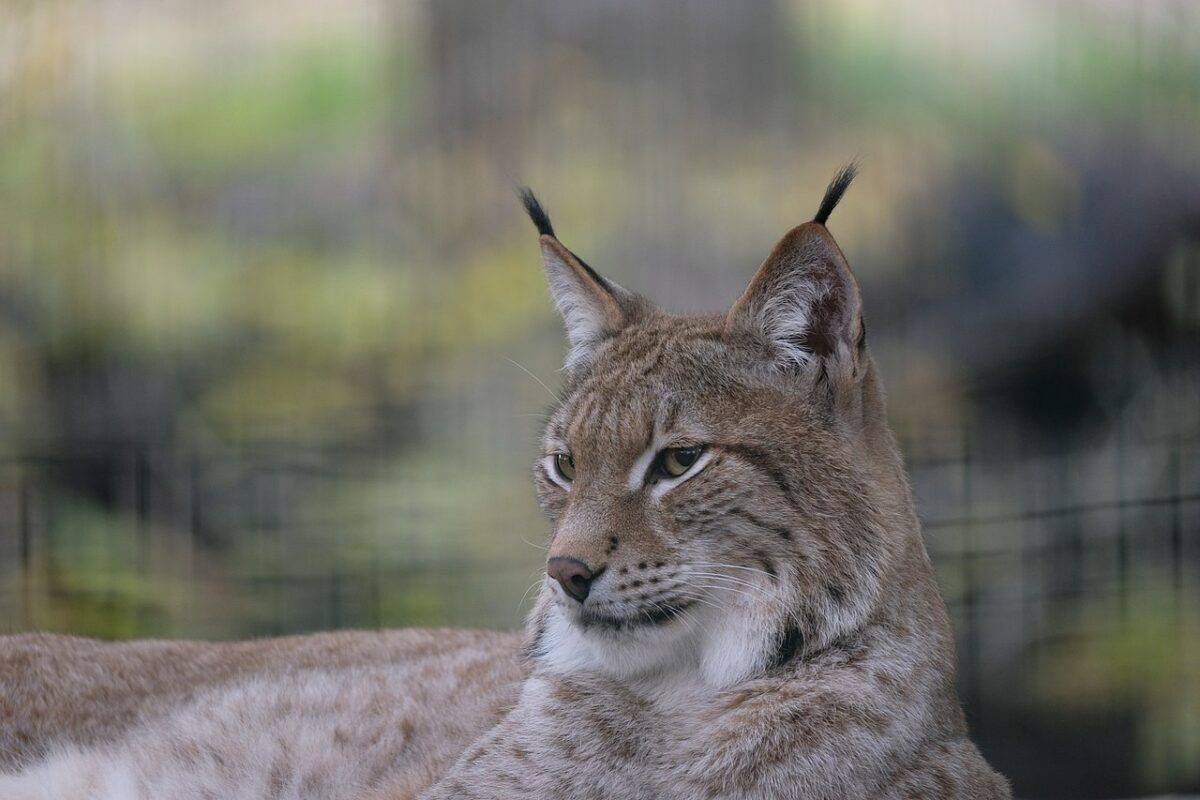
Eurasian Lynx is a secretive animal and the sounds it make is very soft. Musicaline, CC BY-SA 4.0 https://creativecommons.org/licenses/by-sa/4.0, via Wikimedia Commons
This might be the most elusive of all wildlife in Greece to encounter: a lynx!
The Eurasian Lynx has a short body, long legs, and large feet. Its ears have a distinctive black tuft at its tip its coat is long and very dense. They are solitary creatures, as are most cats. Sometimes they are reticent, other times, they mew, hiss, purr, and chatter (like a domestic cat. They produce unusual vocalizations during their mating season; growls, grunts, coughs and caterwauling.
According to the IUCN Red List, Eurasian lynxes’ numbers are stable today and classified as Least Concern. Habitat loss due to deforestation, loss of prey due to illegal hunting, and game hunting and trapping for fur are the primary threats to this species.
Quick facts:
- The Eurasian lynx is Europe’s third largest predator after brown bears and wolves, and is the biggest of the lynx species.
- The word “lynx” is thought to come from Greek mythology, where Lynceus was said to be so keen sighted that he was able to see through the earth. Lynxes have perfect eyesight and might be named after him.
- A group of lynx can be called a destruction, clowder, clutter or a pounce of Lynx!
Read more about Lynx here.
Gray Wolf
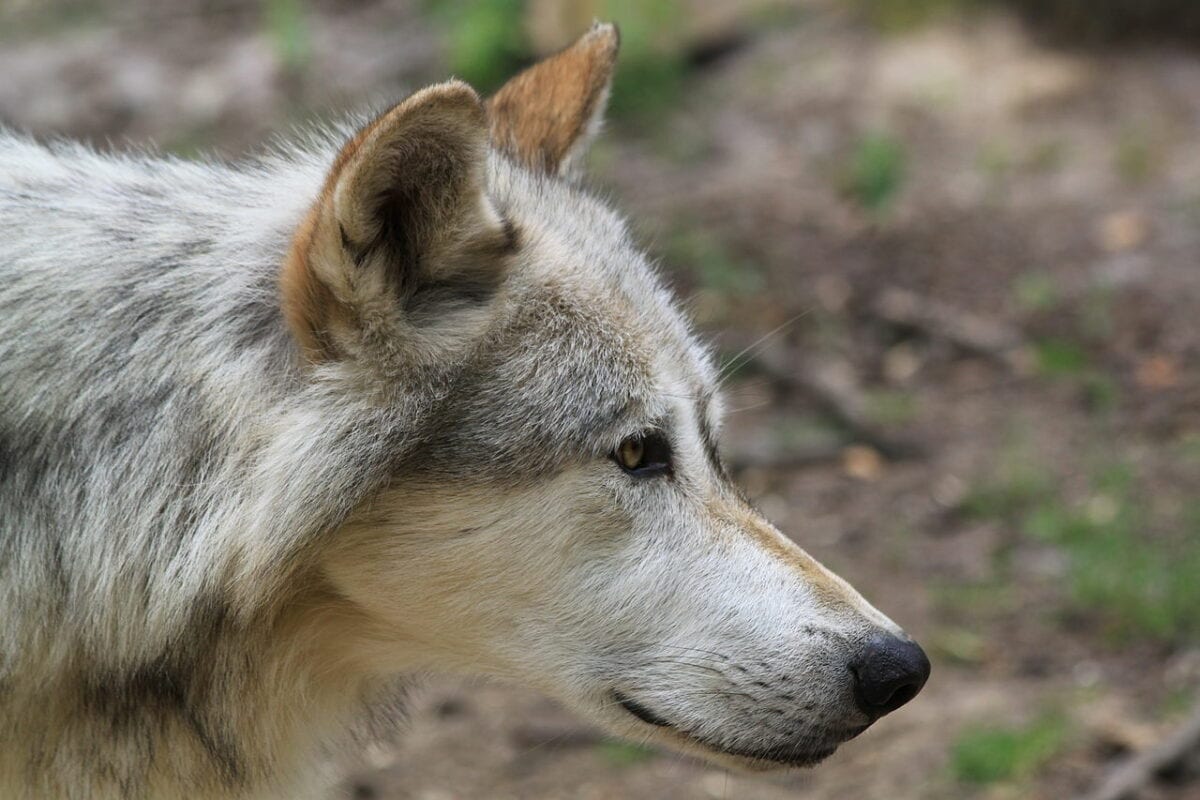
Wolves once existed throughout much of Europe but conflicts with humans and fears originating from religious beliefs, myths and folklore led to humans persecuting wolves for hundreds of years.
Though they rarely attack humans, wolves are considered one of the animal world’s most fearsome natural villains. They do attack domestic animals, and countless wolves have been shot, trapped, and poisoned because of this tendency.
The Greek wolf population is estimated at approximately 500-700 individuals with about 10 wolf packs with minimum 50 individuals in each pack.
Quick facts:
- The wolf plays a vital role in Greek religions, but their roles vary enormously. The wolf is often related to the Greek gods Zeus, Apollo, Artemis and Letp; they also seem to act as divine messengers of the gods, notably of Apollo.
- Wolves are legendary because of their spine-tingling howl, which they use to communicate. A lone wolf howls to attract the attention of his pack, while communal howls may send territorial messages from one pack to another.
Golden jackal
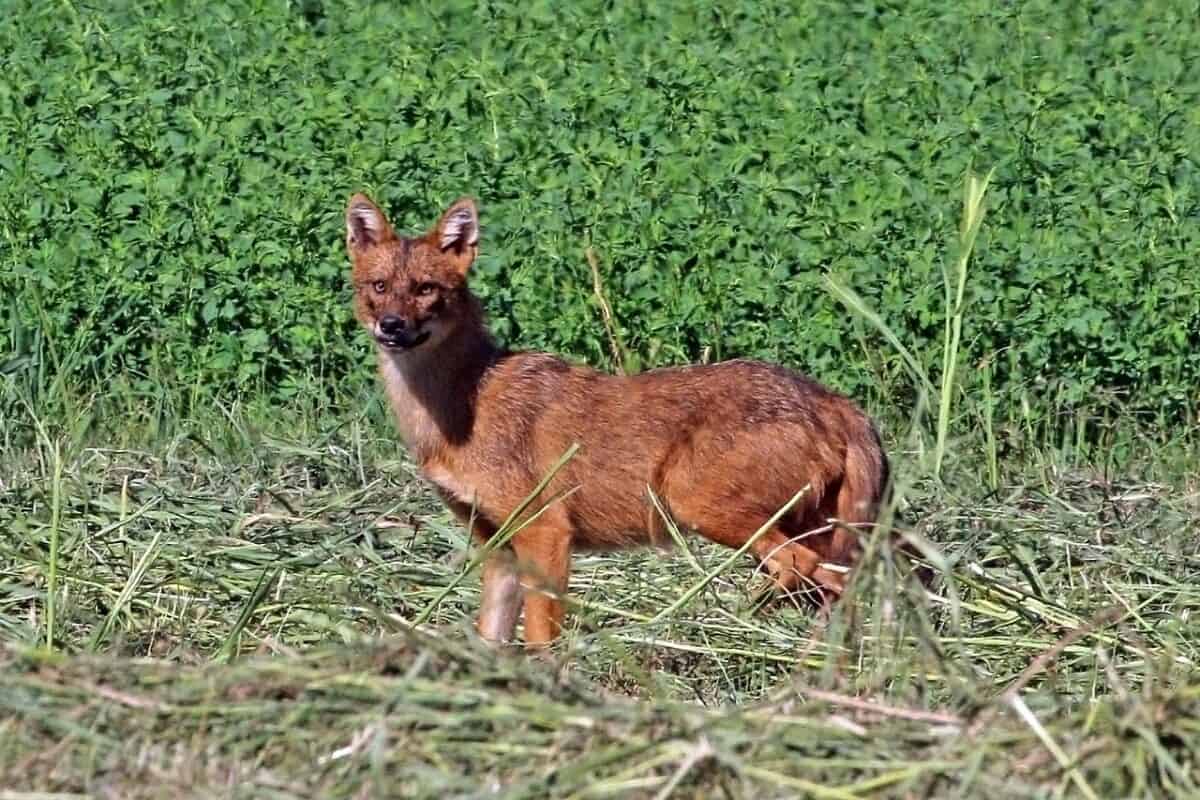
WWF refers to the Golden Jackal as “a shy and misunderstood resident of the Greek countryside”: up until 1990, jackals were classified as a harmful species, and, as a result, dozens of them were killed each year.
The Golden Jackal is still a widespread species fairly common throughout most of its range. Its tolerance of different habitats, and omnivorous, opportunistic diet means it can live in a wide variety of areas. However, they face human-wildlife conflict where they roam onto farmland and are likely to be trapped, poisoned or shot.
These beautiful jackals are called “nature’s cleaners” since they prey on rodents and comb their territories for organic residue and waste (fallen fruit, carrions, etc.).
Golden jackals use a comprehensive inventory of howls to locate one another. By howling together, a pair shows a bond between them, and thus the choral howling can be considered a kind of betrothal.
Quick facts:
- The golden jackal likes it dry – so you can find them mostly in deserts, open savannas and arid grasslands.
- Each jackal family has their own yipping sound that only members of their own family respond to.
- Golden jackals live in mated pairs and are strictly monogamous.
Ocean Animals in Greece
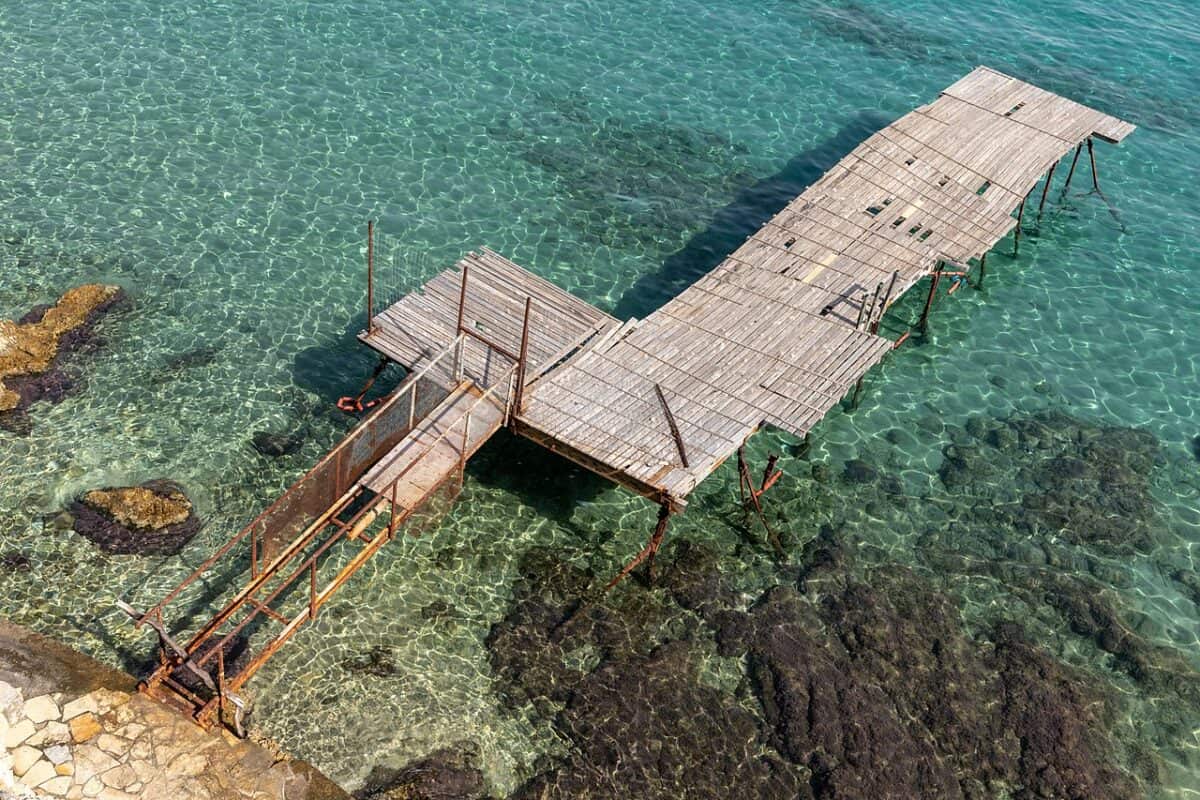
Island in Greece. Image via Dietmar Rabich / Wikimedia Commons / “Korfu (GR), Korfu, Altstadt — 2018 — 1156” / CC BY-SA 4.0For print products: Dietmar Rabich / https://commons.wikimedia.org/wiki/File:Korfu_(GR),Korfu,_Altstadt—2018–_1156.jpg / https://creativecommons.org/licenses/by-sa/4.0/
Greece is surrounded by the Mediterranean Sea and has thousands of islands within its borders.
This area has a vibrant marine life: the open waters are frequented by some of the most important populations of aquatic mammals in the Mediterranean, including whales, dolphins and seals. This is the perfect place for boat or diving expeditions!
Various mammals reside in the clean, blue waters of the Greek Sea, some of which are on the verge of extinction. The endangered marine life of Greece is protected by some non-governmental organizations, such as the World Wildlife Fund (WWF), Greenpeace and Archelon. Seals, Dolphins, Whales and Sea Turtles are among these stunning marine animals.
Here is a list of some of the unique ocean wildlife in Greece that you will be able to see off the coast of Greece’s beautiful beaches:
Monk seal
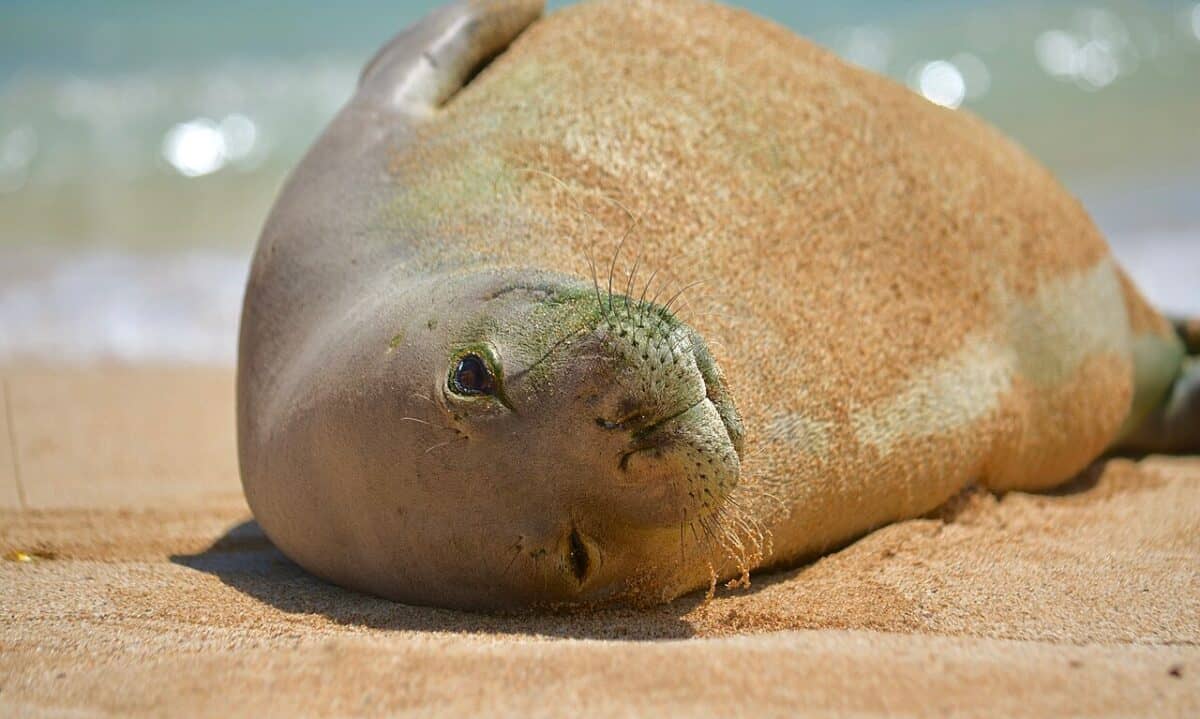
Monk seal resting on beach. Image via Ashley Lee, CC BY 4.0 https://creativecommons.org/licenses/by/4.0, via Wikimedia Commons
The Mediterranean monk seal (Monachus monachus) is an earless seal of the tribe Monachini. They are the only earless seals found in tropical climates.
They are more than just another species of the marine environment; being an integral part of the past, present and future of the Greek seas. It is in Greece where roughly half of the monk seal’s global population, 250 to 300 individuals, lives and breeds.
Monk seals were, according to the ancient Greeks, sacred animals, protected by Poseidon and Apollo. But, unfortunately, this unique species is one of the most threatened animals on the planet. According to The Red Data Book of Threatened Animals of Greece, the Mediterranean monk seal faces an extremely high risk of extinction from its natural environment in the immediate future and is classified as critically endangered.
The seals are threatened by human disturbance of their coastal habitats, disease, and continued hunting. By the 1990s, only about 1,400 Hawaiian monk seals and 300 to 600 Mediterranean monk seals were still alive.
Quick fact: The monk seal’s name
In 1779 a naturalist called Johann Hermann published the first modern scientific description of the animal we call the Monk seal. Hermann suggested naming the animal Münchs-Robbe, because he vaguely remembered a paper describing an animal known locally as moine in Marseille, which he concluded must be this same species. He was also reassured by contacts who had lived in Marseille that the animal was indeed called moine there.
Hermann wryly noted the monkish resemblance of the seal (the shape of the head and scapula-like shoulders) as the seal arched up on the pool edge. So, he judged it a well-suited name, and saw no reason to change it. In the History of Quadrupeds Hermann’s writings were mistranslated from German to explain that “the skin of the neck [of the monk seal] folds like a monk’s hood.” Thus, the name stuck.
Loggerhead turtle
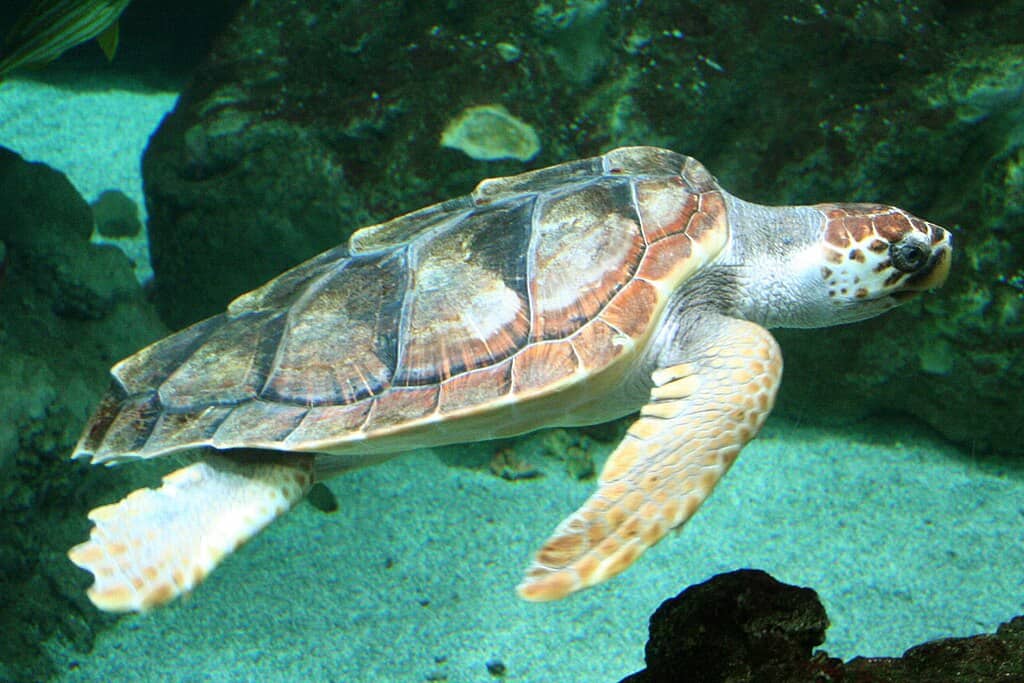
Loggerhead turtles, also known as Caretta turtles, are common in Greece. If you want to encounter one of these emblematic creatures, ensure you have the following beaches on your list: Zakynthos, Kyparissia, Lakonikos, Rethymno, Chania, Messenia, and Koroni. These are the seven biggest egg-laying destinations for Loggerheads.
During the nesting season (late May to August) you can observe sea turtles in their natural habitat during the daytime. Be careful to make sure that you leave the beaches before night time to give the turtles space to nest. Late in July the hatchlings will appear.
During this time beach-goers should not interfere with the baby turtles. Tourists should stay away from and not try to lift the turtles and carry them to the sea because this first journey is supposed to strengthen their bodies. Do not pour water on them either because it may confuse them.
Quick facts:
- Another living fossil – loggerhead turtles are the living relatives of a group of reptiles that have lived on Earth and travelled our seas for the last 100 million years.
- They are named for their large heads that support powerful jaw muscles, allowing them to crush hard-shelled prey like clams and sea urchins.
- If they manage to escape their natural enemies and human-generated threats and influences, loggerhead sea turtles live for up to 100 years.
- The sex of Loggerhead hatchlings is determined by nest temperature: hot temperatures result in more females, and cool temperatures result in more males.
Basking Shark
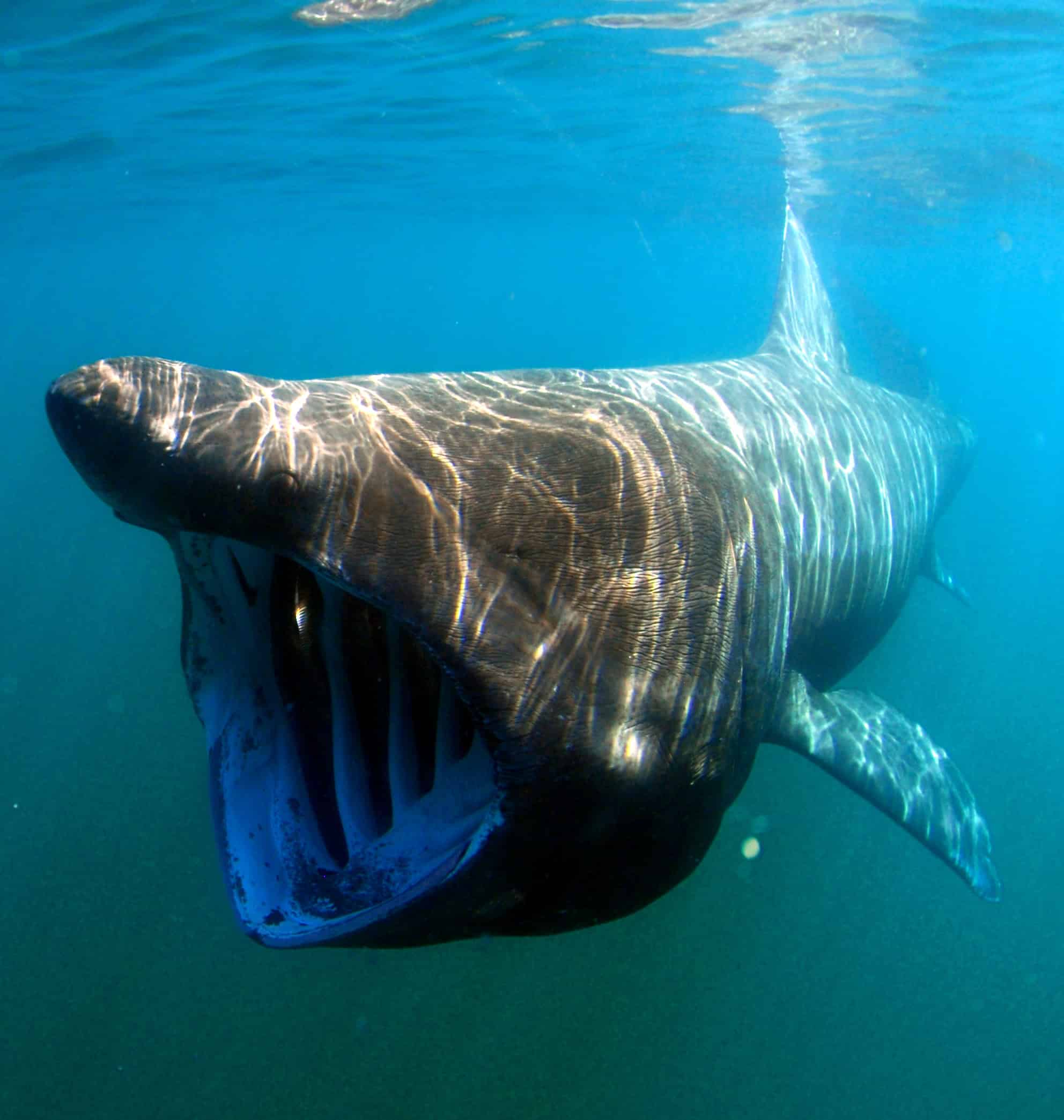
Exploring Greece’s underwater world can be an awe-inspiring adventure, but for many, the mere mention of “shark” sends shivers down the spine. We’ve all seen those menacing images of ferocious jaws bristling with teeth. However, let’s set the record straight: not all sharks are the stuff of nightmares. In fact, some are downright gentle giants.
Enter the basking shark, a creature that couldn’t be further from your typical Hollywood shark villain. Forget about terrorizing fishing villages; these creatures are more like the ocean’s graceful herbivores. The most hair-raising thing about them is the word “shark” in their name!
Picture this: a basking shark leisurely gliding through the water, resembling a majestic whale more than a fearsome predator. With their unhurried pace, imposing size, and easygoing temperament, they’re as harmless as can be. Spotting them is a breeze, thanks to their distinctive dorsal fins and a penchant for hanging out near the water’s surface, where plankton, their favorite meal, thrives.
Now, here’s where the adventure gets truly exciting. Imagine yourself diving or snorkeling alongside these gentle giants. You won’t need a time machine; you can find them all around the Greek Islands, with the best chances during the summer off the coast of Rhodes. It’s an unforgettable experience that should be on every wildlife enthusiast’s bucket list when visiting these beautiful islands.
And here are some quick facts to make your jaw drop (in a good way):
- The basking shark boasts a mouth that can open up to a whopping 3 feet wide.
- Despite having hundreds of tiny teeth, they don’t use them for hunting. Instead, they cruise along with mouths wide open, filtering plankton as they go.
- These sharks are quite the social butterflies, often forming schools of up to 100 individuals.
Where to go in Greece:
With its beautiful beaches, picturesque islands covered in whitewashed buildings and age-old monuments, Greece is a dreamy summer destination. But many visitors aren’t aware that the country boasts vibrant wildlife and has among the richest biodiversity in Europe.
If you are a nature lover and you want to see the wildlife in Greece mentioned earlier in this article, there read below to see the locations you should visit:
1. National Park of Mountain Pindos
Nestled in the northwest corner of Greece, Pindos National Park stands as a rare haven where wild bears roam freely, offering a unique glimpse into the untamed beauty of this country. Here, amidst the dense forests and towering mountains, bears and wolves have found their preferred habitat.
But that’s not all – the park’s wilderness is home to more than just these majestic predators. You might also encounter groups of red deer as you explore the various trails that wind through the park. So, if you’re planning a holiday in Greece and seek an adventure that takes you off the beaten path, Pindos National Park promises an unforgettable experience, where the untamed spirit of nature thrives in all its glory.
2. Nestos Delta
Located in northern Greece, close to Thassos Island, the Nestos Delta and its surrounding lagoons are home to rare mammals such as wild otters, jackals, and boar. The region is the home for many wild animals in Greece, and it is among the most famous destination for nature lovers – especially the birdwatchers.
3. Zakynthos
Zakynthos, a gem of an island in Greece, plays host to one of Europe’s most crucial nesting grounds for the loggerhead sea turtle, known scientifically and locally as Caretta caretta. These magnificent creatures are frequent visitors to the Bay of Laganas and the Strophadia Islands, which are situated around 40 miles south of Zakynthos.
Although the beaches aren’t accessible to the public after nightfall to protect the turtles, you still have the opportunity to witness these ancient mariners during your visit. Consider hopping on a boat tour or embarking on a thrilling scuba diving adventure, where you may be lucky enough to cross paths with these majestic loggerhead sea turtles in their natural habitat. It’s an encounter you won’t soon forget!
4. Alonissos
Greece’s first marine park is one of Europe’s largest marine protected areas. As such, Alonissos Marine Park, located in the Sporades islands, is a must-see if you are passionate about marine life.
You might get the chance to spot the Mediterranean monk seal, an endangered marine species which populates the islands of Gioura and Piperi. Alonissos Marine Park is also a good place to spot dolphins: take a boat trip around the islands for a chance to see them swim and jump out of the water.
5. Prespa Lakes
The Prespa Lakes, also known as the Prespa National Park, is located in the northern part of the country. Home to diverse fauna and flora, this birdwatching destination is ideal for spotting over 200 aquatic bird species.
Ducks, white and Red pelicans, cormorants, geese, and herons are only a few of the exciting creatures you can observe in Prespa Lakes, the natural heaven where nature and man live in harmony.
6. Rhodes
In late May every year, Rhodes welcomes thousands of butterflies, congregating in fluttering clouds of scarlet wings that cluster between the trees. They are attracted to the aptly-named Valley of the Butterflies by the high humidity and tempting scent of the park’s zitia trees – and they stay all summer, sheltering in the cool.
The Valley of butterflies is one of the island’s most famous attractions, besides the ancient sites. It is a spectacular green haven abounding in flora and trees where butterflies come every year to breed.
7. Kerkini Lake
Not every European lake can boast a population of wallowing water buffaloes – but beautiful Lake Kerkini in northern Greece can. The lake and the protected surrounding wetlands are home to hundreds of these horned beasts. It’s a distinctly Serengeti-esque sight, best enjoyed on a boat trip through the mirror-like lake.
Keep an eye out for the bird life, too: over 300 protected species nest and breed here, including flamingos, pelicans, eagle owls and masked shrikes. The birdwatching is spectacular year-round, although we’d recommend spring and autumn for long, dry days and soft sunlight that’s perfect for wildlife photography.
8. Samaria Gorge
Samaria Gorge on the island of Crete is recognized as one of the biggest canyons in Europe, and its intrinsic excellence is incredible. Crete, the largest island of the nation, is the natural habitat for many endemic species, including a rare species of goat called the kri-kri. The island is also home to the Cretan badger, and many plant species including anemones, daffodils, and cyclamen. If you feel like exploring the majestic gorge, keep your eyes open as you hike through the rocks.
9. Evrytania
Located in the heart of Greece, the region of Evrytania is a natural breeding ground for wolves and foxes, and wild deer, and even wild cats have been spotted here. With a rich ecosystem, Evrytania is also home to wild boars, who are now benefitting from a hunting ban.
10. Evros Delta and Dadia Forest
Uppermost wildlife destinations in a nearby range to Alexandroupoli are Evros Delta and Dadia Forest. Dadia Forest is a national park with 36 species of birds of prey, 166 bird species, wild apple trees, and rare orchids. The Evros Delta is ecological heaven, where you can visit for boating. The adventure of viewing the flamingos reflected on the covering of the lagoon is simply extraordinary.
Operators to contact:
Greece’s national parks offer galore wildlife encounters, from shark spotting to bear encounters. We’ve tracked down the best operators to contact if you want to have your following wildlife in Greece adventure:
Natural Greece
Natural Greece has been offering expert-led Eco & Wildlife Holidays all over Greece, delighting customers worldwide, since 2013.
Their tours include bird watching and botanical tours, bear tracking holidays, marine eco-adventures to the most spectacular regions of Greece. Travel experiences are led by the best local guides that possess vast conservation knowledge in their field. Explore the real Greece, far away from the crowds. Nature tours are enriched with yummy Greek food, cultural experiences and fun activities. Traveling with local guides will make a difference when you want to know where to spot the wildlife in Greece!
Other operators to contact:
Summary of Animals in Greece
As mentioned before, Greece is one of the wealthiest countries in the European Union regarding biodiversity. Over 900 species of wildlife and over 5,000 species of flora are within its borders.
This country also hosts some of Europe’s largest and scariest animals on land and in the sea! Natural Greece, Greeka, and Deep Blue Yachting are great operators to contact if you want to encounter some of the fantastic wildlife in Greece.
If you enjoyed reading about Animals in Greece, maybe you’d like to read up about encountering sea turtles or even where to visit the wildlife of Sweden, and the top 10 European animal encounters to experience. Enjoy!
Join our Forum for free today!

- Third Elk Incident in Two Weeks in Estes Park, Colorado and How to Stay Safe - July 4, 2024
- 17 Animals That Mate For Life - June 24, 2024
- 13 Animals That Lay Eggs (Some Might Surprise You!) - June 16, 2024

